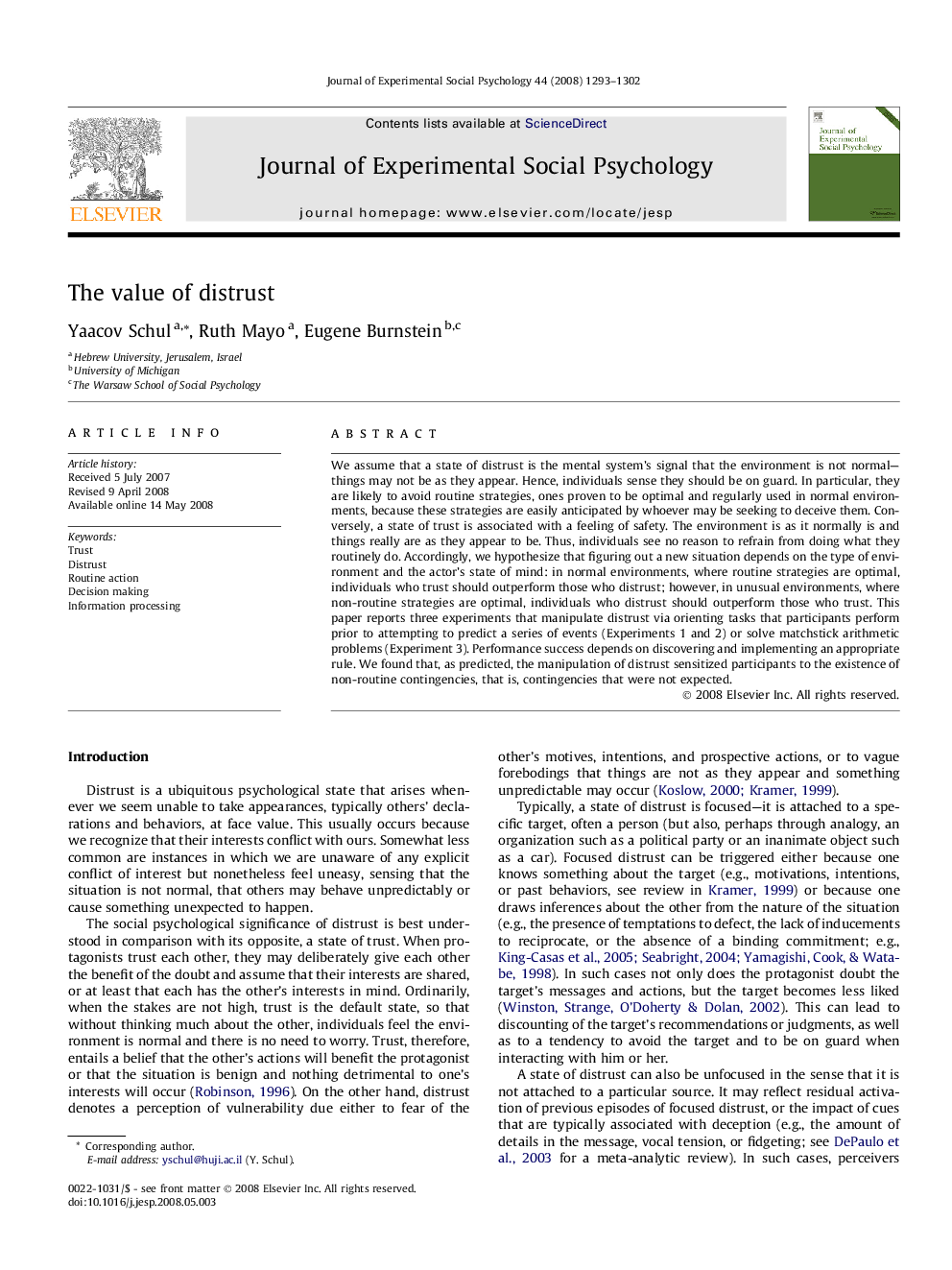| Article ID | Journal | Published Year | Pages | File Type |
|---|---|---|---|---|
| 947946 | Journal of Experimental Social Psychology | 2008 | 10 Pages |
We assume that a state of distrust is the mental system’s signal that the environment is not normal—things may not be as they appear. Hence, individuals sense they should be on guard. In particular, they are likely to avoid routine strategies, ones proven to be optimal and regularly used in normal environments, because these strategies are easily anticipated by whoever may be seeking to deceive them. Conversely, a state of trust is associated with a feeling of safety. The environment is as it normally is and things really are as they appear to be. Thus, individuals see no reason to refrain from doing what they routinely do. Accordingly, we hypothesize that figuring out a new situation depends on the type of environment and the actor’s state of mind: in normal environments, where routine strategies are optimal, individuals who trust should outperform those who distrust; however, in unusual environments, where non-routine strategies are optimal, individuals who distrust should outperform those who trust. This paper reports three experiments that manipulate distrust via orienting tasks that participants perform prior to attempting to predict a series of events (Experiments 1 and 2) or solve matchstick arithmetic problems (Experiment 3). Performance success depends on discovering and implementing an appropriate rule. We found that, as predicted, the manipulation of distrust sensitized participants to the existence of non-routine contingencies, that is, contingencies that were not expected.
